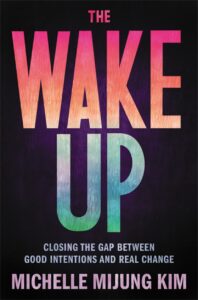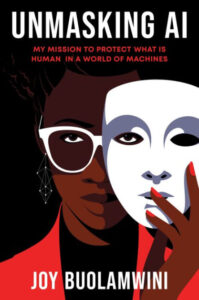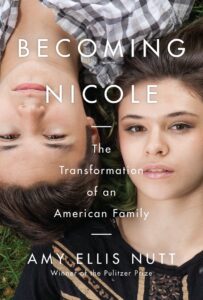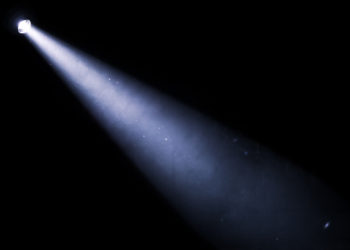Editor’s Note: Today’s post was curated by Damita Snow. Damita is Director, Accessibility & Diversity, Equity and Inclusion, Publications & Strategy at the American Society of Civil Engineers.
Today we continue our recommendations for reading about diversity, equity, inclusion, and accessibility (DEIA; Part 1 of this post series can be found here). As we continue to reconnect, it is our hope that you have books you may wish to recommend for continued growth and learning. Please post them in the comments and we thank you in advance for sharing them. In 2020, SSP “Reaffirmed our Commitment to Diversity, Equity and Inclusion” and will continue on that path via the work of the SSP DEIA Committee and our active and engaged membership.
Camille Lemieux
 Some books stay with us for long after we turn the final page. Michelle Mijung Kim’s The Wake Up: Closing the Gap Between Good Intentions and Real Change is the text that keeps me most grounded in DEIA work.
Some books stay with us for long after we turn the final page. Michelle Mijung Kim’s The Wake Up: Closing the Gap Between Good Intentions and Real Change is the text that keeps me most grounded in DEIA work.
In the opening chapters, Michelle Mijung Kim asks the reader to reconsider why they are on a journey toward social justice in the first place. She argues that it’s not enough to want to pursue social justice for the benefit of others, because that makes it easy to pause or stop completely when things get difficult. By articulating a personal “why” for our actions which recognizes our roles in dismantling and upholding systemic oppressions, we can stay grounded, regardless of what obstacles emerge.
I have multiple marginalized identities, but it’s easy for me to unintentionally prioritize some issues over others. My social justice issues – the ones I must contribute to dismantling – cannot only be Black feminist issues, for example, but all forms of ableism, antisemitism, homophobia, Islamophobia, racism, sexism, transphobia, and so on, because they are all perpetuated by systems of oppression that share the common root of white supremacy.
After establishing additional fundamental principles for our journey, Kim charts a way forward for how we can create positive change in our communities. The frameworks provided account for the nuanced, complex, and imperfect ways of showing up for ourselves and others. Topics explored include ways to center the most marginalized in any given situation, how to apologize when we’ve caused harm, how to intervene when we witness harm being caused, and how we clarify what we are willing to sacrifice to uphold our personal commitments toward social justice.
Allison Leung
 For the fiction lovers out there, and for those who spend too much time on #BookTok, here is one for you. Babel: Or the Necessity of Violence: An Arcane History of the Oxford Translators’ Revolution by R. F. Kuang is a speculative fiction novel set in 1830’s Oxford, where silver is imbued with magic through the power of words and translation. The story is told through Robin Swift, an orphan plucked from his home in Canton by an Oxford professor and taken to England, where he becomes a translation scholar at the infamous Royal Institute of Translation at Oxford, otherwise known as Babel.
For the fiction lovers out there, and for those who spend too much time on #BookTok, here is one for you. Babel: Or the Necessity of Violence: An Arcane History of the Oxford Translators’ Revolution by R. F. Kuang is a speculative fiction novel set in 1830’s Oxford, where silver is imbued with magic through the power of words and translation. The story is told through Robin Swift, an orphan plucked from his home in Canton by an Oxford professor and taken to England, where he becomes a translation scholar at the infamous Royal Institute of Translation at Oxford, otherwise known as Babel.
Summarizing the plot of Babel would take up this entire blog post (check out this summary if you want to learn more). In a broad sense, Babel is about the consequences of colonization on the colonized and the evils of imperialism.
But that isn’t why I am recommending it. What impressed me about Babel is how it beautifully portrays a complex web of marginalized identities and shows what it looks like when those identities regularly conflict with one another. Many of the characters in Babel struggle with the duality of their identities. Robin, Ramy, and Victoire are immigrants who, in turn, adore and feel excluded by their Oxford home. Letty is one of the very few women attending a predominantly male institution and, as such, suffers from her own share of discrimination. But as a white, British woman, she carries around a level of privilege she doesn’t understand she has which ultimately creates a divide between her and her three best friends. Babel highlights that people cannot be distilled into a single thing, who we are is a constantly swirling and clashing set of identifiers that can motivate us in radically different ways throughout our lives.
Perhaps most important to me is R.F. Kuang’s deft understanding of the inherently conflicted nature of being mixed race. Robin is half-Chinese and half-English, and because he can “pass” as White in many situations, he is both privileged and marginalized by English society. Being half of both cultures means he feels he is a part of neither, and his regularly confused sense of self will feel very familiar to other mixed-race readers (like myself).
Anjana Narayanan
 Machines don’t lie. Do they? Unmasking AI: My Mission to Protect What is Human in a World of Machines is the inspiring story of computer scientist Joy Boulamwini who challenges the general tendency to think that machines are objective. She argues against this harmful perception with the scrutiny of a scientist and the sensitivity of a poet.
Machines don’t lie. Do they? Unmasking AI: My Mission to Protect What is Human in a World of Machines is the inspiring story of computer scientist Joy Boulamwini who challenges the general tendency to think that machines are objective. She argues against this harmful perception with the scrutiny of a scientist and the sensitivity of a poet.
Boulamwini embarks on her research journey in AI technology at the esteemed MIT Media Lab with the excitement of a young PhD student keen on building futuristic technology, only to discover the flip side of the coin – how deployment of untested new AI technologies built with no guardrails is affecting the already marginalized groups of society. Boulamwini doesn’t let the power of the status quo, or the size of corporations keep her findings hidden. She uses her courage, communication skills, and her curiosity to keep asking questions and pushing for improvements, becoming known for her expert work in algorithmic bias, leading at one point to a meeting with the US President – all while she’s under 35 years of age! While this is a breakneck speed of progression, it is a testament to her energy and commitment toward social equity.
In her book, Boulamwini explains in easy-to-understand language the intertwined nature of technology and humanity and how one cannot be built in the vacuum of another. She traces the steps of her research progression at the intersectionality of technology, power, communication, and equity. Boulamwini captures her angst for a more equitable society in prose and at times through her poems in the book.
The book gives a detailed description of the differences between face detection and face identification technologies, how readily available algorithms used by scientists and companies may have built in bias due to the non-inclusive nature of the training data set, and how this leads to exclusion and erasure of people of color in the community and affects them unfairly.
As AI technologies become mainstream and part of everyone’s life, Unmasking AI is timely and recommended reading for all of us to understand our rights to our data, our ability to question decisions made by machines, and the importance to take a “under-the-hood” peek inside new AI technologies and assess the good and bad that comes with it.
While enjoying a position of privilege to create new AI technology, Boulamwini chose to study what ails AI. She is indeed set out on a “Mission to Protect What is Human in a World of Machines.” And our thanks to her for that!
Damita Snow
Racial Justice at Work at Work: Practical Solutions for Systemic Change by Mary-Frances Winters & The Winters Group team shares how we must shift from how we address racial justice at work, consider reparations, practice dedicated and intentional approaches, expect resistance to change, create safe spaces, use data to move forward, and assume an approach of empathy. It provides practical solutions for any sized organization and much more. Author Mary Francis Winters explains it best in the video below.
I learned about this book from ASCE’s Publications & Standards, Diversity, Equity, and Inclusion (DEI) Committee. We host a bimonthly book club meeting, and this is one of the excellent books we’ve discussed. Although nearly 300 pages long, the book is conveniently divided into chapters. Each chapter provides “Discussion/Reflection Questions” that provoke thought about specific situations. Another standout feature are the examples for each behavior discussed in every chapter, along with practical steps that readers can implement. Reading this book feels more like taking part in an ‘experience’ rather than merely reading about the subjects. The best way to understand this unique aspect would be to experience the book for yourself.
Heather Staines
 I joined a neighborhood book club last year, and they’ve really broadened my reading horizon (away from the sci-fi and thrillers that I gravitate towards). Our latest title, Becoming Nicole: The Transformation of an American Family by Amy Ellis Nutt, tells the story of the Maines family’s victory a decade ago to force the state of Maine to accommodate Nicole’s gender transition during her middle school years.
I joined a neighborhood book club last year, and they’ve really broadened my reading horizon (away from the sci-fi and thrillers that I gravitate towards). Our latest title, Becoming Nicole: The Transformation of an American Family by Amy Ellis Nutt, tells the story of the Maines family’s victory a decade ago to force the state of Maine to accommodate Nicole’s gender transition during her middle school years.
The story sets Nicole’s journey in the context of her family, fiercely protective mom Kelly and father Wayne who struggled to balance Nicole’s needs with those of her identical twin brother Jonas. There is much more media attention now to many aspects of this story: pronoun use, gendered clothing, bathroom accessibility, and bullying. Viewing these events through the eyes of this brave family reminds us how much things have changed. Pulitzer Prize winning author Amy Ellis Nutt intersperses family recollections and documentation with brief histories on the understanding of gender and the societal treatment of transgender people. Amy spent four years with the Maines family writing this book, and, as a result, the family all become fully realized individuals as the chapters speed by.
Journal entries and contemporary notes by Kelly provide insight into young Nicole’s feelings and actions. “Nicole knew that she was more than the sum of her body parts – that her heart and mind defined who she was, but her body gave her context. Bodies hold our stories. They connect us to the world because they are the instruments by which we experience the world.”
This book was published in 2015. The optimism detailed in the final pages, not anticipating the backlash we now know was soon to come, is heartbreaking. It can seem like nearly every day a new tragedy is unfolding somewhere across the country. But I believe that hope endures through the younger generations who have grown up with a different understanding of gender along with the friends and families who have supported transgender youths.
The scale of this book, starting with one twin, then one family, one town, one state, takes us from broad 30,000 foot sentiments and assumptions to the grassroots day-to-day actions and requirements of being true to oneself. Regardless of whether you (yet) know someone who identifies as transgender or know someone who loves them, you will discover new insights and perspectives in this quick read of a tale from almost ten years ago that remains relevant today. A successful actress, Nicole played the first transgender superhero on three seasons of Supergirl and currently stars in Yellowjackets.

Discussion
5 Thoughts on "Guest Post – Reconnecting by Reading: A Selection of Books About Diversity, Equity, Inclusion and Accessibility Part 2"
The Black Tax: 150 Years of Theft, Exploitation, and Dispossession in America by Andrew W. Kahrl, co-director of the UVA Karsh Institute of Democracy’s Repair Lab and professor of history and African American studies.
I find it very disturbing and a sign of how misogynistic our society still is as displayed in that book cover for Becoming Nicole is. While identifying as a boy, Nicole stares confidently into the camera. When identifying as a girl, Nicole has a full face of makeup while staring slack jawed and sexually at the camera. Is that all being a girl is? Is that what men think being female is?
I think you may be confused. The book in question is the story of two identical twins, and I assume the photo shows the siblings, not one person in two different identities.

